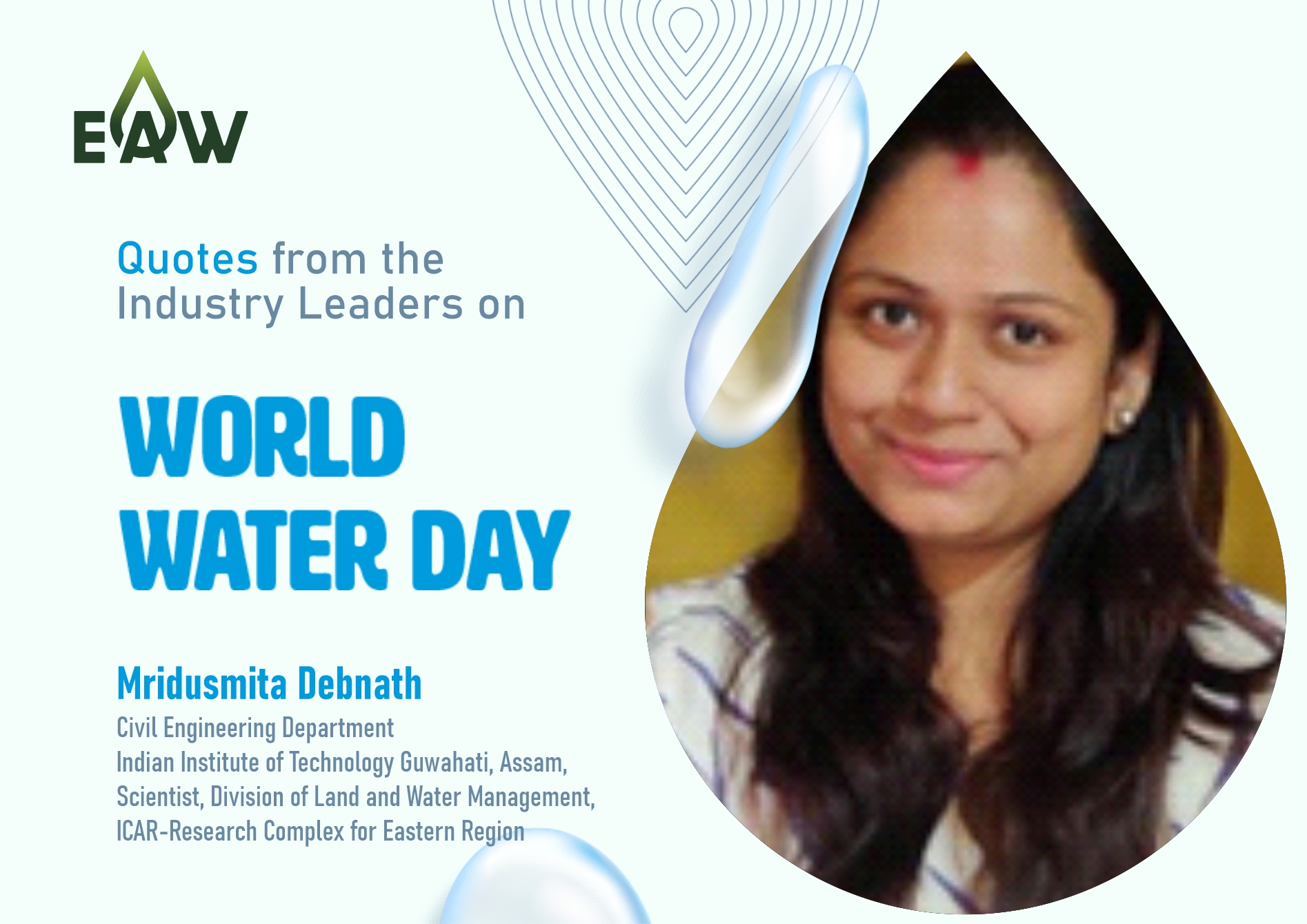World Water Day 2023 quote by Mridusmita Debnath,Civil Engineering Department, Indian Institute of Technology Guwahati, Assam, Scientist, Division of Land and Water Management, ICAR-Research Complex for Eastern Region –
Forecasts on demographic growth and economic development specified a significant increase in food demand to almost double by 2050. Rising food prices are a clear indication of that. Further, demographic projections confirmed that more than 50% of the population worldwide will suffer water scarcity by 2025. Thus, the conflicts among water-demanding sectors and uncertain climate aggravate the situation in agriculture. Moreover, with limited land resources, crop area augmentation is impossible, giving rise to an urgent need for agricultural water management by quantifying future food and irrigation demand.
Agricultural water demand occupies the lion’s share and nonconventional water use for irrigation can significantly bring down the water need use such as rainwater harvesting and recycling irrigation water. Also, importing water-intensive crops in the international food trade is similar to considerable water savings for those countries and ensuring food security. Hence, the term is coined as ‘virtual water’. Many of these approaches focus on developing countries’ crop production and food security. Several studies have evaluated the potential benefits of crop diversification in changing climate (Maroufpoor et al. 2021; Bhogal and Vatta 2021). Moreover, rice being the staple food of half of world’s population, the monocropping of rice prevails in a major cultivated area of India. The virtual water trade showed significant water outflows in India through rice export, which urges the need for water-efficient rice production (Saxena et al. 2023). Therefore, basic adaptive strategies, including changes in crop pattern, type of crop, and crop breeding which use less water for more production, are required along with improvement in existing irrigation infrastructure to use water efficiently and feed the growing population of India.





